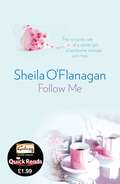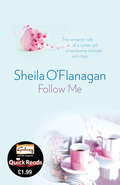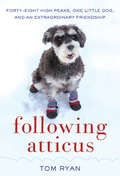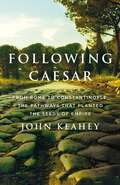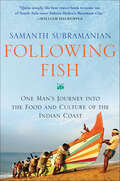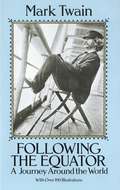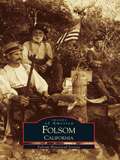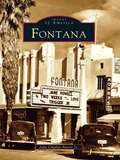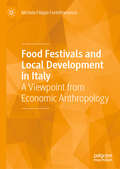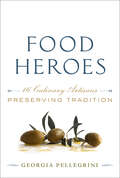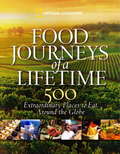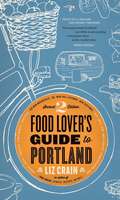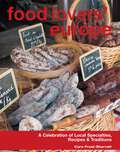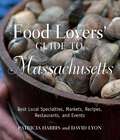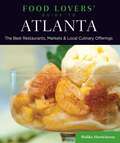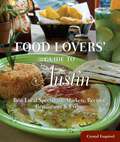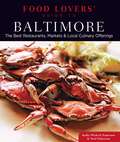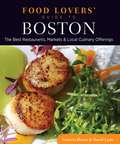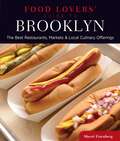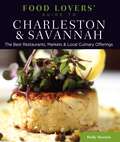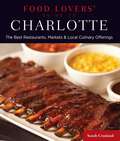- Table View
- List View
Follow Me To: A Journey around the World Through the Eyes of Two Ordinary Travelers
by Nataly Zakharova Murad OsmannThe Follow Me project was created in 2012 based on the concept of showing the beauty and uniqueness of different locations around the world. It is a story told through the eyes of two ordinary travelers who attempt to portray local lifestyles and narratives by means of photography. Since the project's launch on Instagram, it has become a worldwide Internet sensation, emerging as a leading news feature and gathering millions of views on social media and the news sites that covered it. In each stunning image, photographer Murad Osmann is led to a new location by his girlfriend, Nataly Zakharova.These images remind us that in the hustle and bustle of daily life, we so often forget to stop and appreciate the things that surround us--the historical and architectural heritage left to us by our ancestors. Readers join Osmann from the point of view of the main character and are taken on a journey to different historical and cultural sites. The project aims to acquaint readers with different lifestyles. For Osmann and Zakharova, this theme seems infinite, as there are an endless number of places to visit on our planet. Paging through the book, readers will be invited to see something familiar to them from another point of view, via the lens of Osmann's camera.Follow Zakharova and Osmann on a trip around the world, through such locations as Moscow, Madrid, Ibiza, Hong Kong, New York, and London.
Follow Me: Treat yourself to a short and satisfying love story
by Sheila O'FlanaganFOLLOW ME is a fabulously warm, witty and romantic novella from the No. 1 bestselling author Sheila O'Flanagan. A wonderful read, perfect for fans of Kerry Lonsdale and Liane Moriarty.Pippa Jones seems to have it all. The only thing that the high-flying career girl is missing is love. When she spots a gorgeous man who seems to be following her everywhere she goes, she wonders if fate is trying to throw them together. But with her job on the line can she afford to make time for this handsome, mysterious stranger?
Follow Me: Treat yourself to a short and satisfying love story
by Sheila O'FlanaganFOLLOW ME is a fabulously warm, witty and romantic novella from the No. 1 bestselling author Sheila O'Flanagan.Pippa Jones seems to have it all. The only thing that the high-flying career girl is missing is love. When she spots a gorgeous man who seems to be following her everywhere she goes, she wonders if fate is trying to throw them together. But with her job on the line can she afford to make time for this handsome, mysterious stranger?
Follow Me: Treat yourself to a short and satisfying love story
by Sheila O'FlanaganFOLLOW ME is a fabulously warm, witty and romantic novella from the No. 1 bestselling author Sheila O'Flanagan.Pippa Jones seems to have it all. The only thing that the high-flying career girl is missing is love. When she spots a gorgeous man who seems to be following her everywhere she goes, she wonders if fate is trying to throw them together. But with her job on the line can she afford to make time for this handsome, mysterious stranger?
Following Atticus: Forty-eight High Peaks, One Little Dog, and an Extraordinary Friendship
by Tom Ryan"In the mountains Atticus became more of what he'd always been, and I became less-less frantic, less stressed, less worried, and less harried. I felt comfortable letting him lead, and he seemed to know what I needed. He always chose the best route, if ever there was a question, and my only job was to follow." Middle-aged, overweight, and acrophobic newspaperman Tom Ryan and miniature schnauzer Atticus M. Finch are an unlikely pair of mountaineers, but after a close friend dies of cancer, the two pay tribute to her by attempting to climb all forty-eight of New Hampshire's four-thousand-foot peaks twice in one winter while raising money for charity. In a rare test of endurance, Tom and Atticus set out on an adventure of a lifetime that takes them across hundreds of miles and deep into an enchanting but dangerous winter wonderland. Little did they know that their most difficult test would lie ahead, after they returned home. . . . At the heart of this remarkable journey is an extraordinary relationship that blurs the line between man and dog, an indelible bond that began when Tom, following the advice of Atticus's breeder, carried the pup wherever he went for the first month of their life together. Following Atticus is ultimately a story of transformation: how a five-pound puppy pierced the heart of a tough-as-nails newspaperman, opening his eyes to the world's beauty and its possibilities. It was a change that led to a new life among the mountains; an unforgettable saga of adventure, friendship, and the unlikeliest of family; and an inspiring tale of finding love and discovering your true self.
Following Caesar: From Rome to Constantinople, the Pathways That Planted the Seeds of Empire
by John KeaheyNATIONAL BESTSELLERA travel narrative following three ancient roads and looking at more than two thousand years of history of Ancient Rome through the modern eye.In 66 b.c., young, ambitious Julius Caesar, seeking recognition and authority, became the curator of the Via Appia, a road stretching from Rome to Brindisi. To gain popularity with Roman citizens along the way, he borrowed significant sums to restore the ancient highway. He eventually achieved greatness in Rome and the far reaches of Gaul, leading armies along the Via Appia and its sister road, the Via Egnatia, across the Balkans, to battle enemies in Roman civil wars.Other armies followed these two roads that eventually connected Rome to Constantinople, today’s Istanbul. Both Octavian and, later, his friend-turned enemy Mark Antony traveled portions of these roads to defeat Caesar’s murderers, Brutus and Cassius. The great Roman statesman Cicero, the Roman poet Homer, the historian Virgil, and many other notables also journeyed on them. In the early second century a.d., the emperor Trajan charted a new, faster, coastal route between Benevento and Brindisi, later called the Via Traiana.Today, the remains of these roads are preserved as archaeological wonders, and can be seen through the countryside near, and sometimes under, modern highways in the ruins of ancient Roman cities. Some of the earliest villages have disappeared, while others have grown into modern towns with the ancient roads hidden beneath latter-day pavements.In this sojourn across Roman history, John Keahey delves into encounters with diverse peoples in these towns in Italy, North Macedonia, Greece, and Turkey, who warmly embrace travelers following in the footsteps of their ancestors. They shared knowledge of historical sites, meals, and a wealth of local lore. Keahey’s unparalleled storytelling breathes life into the prominent figures, pivotal events, and ancient roads that paved the way for the rise and endurance of the Roman empire. It is a journey full of adventure, discovery, and friendship.
Following Fish: One Man's Journey into the Food and Culture of the Indian Coast
by Samanth SubramanianIn India's long and diverse coastline, fish inhabit the heart of many aspects of life: food of course, and also culture, commerce, sports, history, and society. Journeying along the edges of the peninsula, Samanth Subramanian delivers a kaleidoscope of extraordinary stories. Following Fish conducts rich, journalistic investigations of the use of fish to treat asthmatics in Hyderabad; of the preparation and the process of eating West Bengal's prized hilsa; of the ancient art of building fishing boats in Gujarat; of the fiery cuisine and the singular spirit of Kerala's toddy shops; of the food and the lives of Mumbai's first peoples; of the history of an old Catholic fishing community in Tamil Nadu; and of the hunt for the world's fastest fish near Goa; and of many others.Pulsating with pleasure, adventure, and discovery, Following Fish reveals a series of unknown Indias in a book as intriguing as the country itself.
Following the Equator: A Journey Around the World
by Mark TwainSo begins this classic piece of travel writing, brimming with Twain's celebrated brand of ironic, tongue-in-cheek humor. Written just before the turn of the century, the book recounts a lecture tour in which he circumnavigated the globe via steamship, including stops at the Hawaiian Islands, Australia, Fiji Islands, New Zealand, India, South Africa and elsewhere.View the world through the eyes of the celebrated author as he describes a rich range of experiences — visiting a leper colony in Hawaii, shark fishing in Australia, tiger hunting, diamond mining in South Africa, and riding the rails in India, an activity Twain enjoyed immensely as suggested by this description of a steep descent in a hand-car: "The road fell sharply down in front of us and went corkscrewing in and out around the crags and precipices, down, down, forever down, suggesting nothing so exactly or so uncomfortably as a crooked toboggan slide with no end to it. . . . I had previously had but one sensation like the shock of that departure, and that was the gaspy shock that took my breath away the first time that I was discharged from the summit of a toboggan slide. But in both instances the sensation was pleasurable — intensely so; it was a sudden and immense exaltation, a mixed ecstasy of deadly fright and unimaginable joy. I believe that this combination makes the perfection of human delight."A wealth of similarly revealing observations enhances this account, along with perceptive descriptions and discussions of people, climate, flora and fauna, indigenous cultures, religion, customs, politics, food, and many other topics. Despite its jocular tone, this book has a serious thread running through it, recording Twain's observations of the mistreatments and miseries of mankind. Enhanced by over 190 illustrations, including 173 photographs, this paperback edition — the only one avai1able — will be welcomed by all admirers of Mark Twain or classic travel books.
Folsom
by Folsom Historical SocietyWith the nearby discovery of gold in 1848, Folsom, which began as a remote camp for trappers and traders, quicklybecame a prosperous mining town in the foothills of the Sierra Mountains. When the railroad arrived, Folsom boomed, serving as a transportation hub and gateway to the gold country. Downtown's Sutter Street became a busy center for merchants, hotels, and commerce, as well as the terminus for the Pony Express. Encompassing 135 years, this book celebrates Folsom's diverse heritage from its beginnings as "Granite City" to the recent growth attributed to the influx of high-tech corporations. Over two hundred images illustrate its history, including personal glimpses of family and home life, churches, schools, holiday celebrations, local culture, politics, and social organizations, to photographs of well-known landmarks and institutions such as the Cohn House, Sutter Street, the Folsom Powerhouse, the railroad, and of course, the infamous Folsom Prison.
Fontana
by John Charles Anicic Jr.The self-proclaimed "City of Innovation" has a great tradition of reinventing itself. Today's Fontana was once known as "Rancho de San Bernardino." The first recorded owner, Don Antonia Maria Lugo, passed the land down to his sons, and in 1851, the Lugo brothers sold their stake to Mormon settlers, who soon relocated to Utah. Various agricultural developers, including A.B. Miller, saw potential in the land, changing its name to "Fontana" from its earlier railroad name "Rosena." But citrus and grain were not the main exports for long. During World War II, the city switched gears to become an industrial powerhouse as Southern California's leading steel producer. At the junction of Interstates 10 and 15, modern Fontana is a vital nexus of transportation and commerce, with the legendary Route 66 passing through its well-preserved downtown district and Route 99 through its southern boundary.
Food Festivals and Local Development in Italy: A Viewpoint from Economic Anthropology
by Michele Filippo FontefrancescoWhat does the proliferation of food festival tell us about rural areas? How can these celebrations pave the way to a better future for the local communities? This book is addressing these questions contributing to the ongoing debate about the future of rural peripheries in Europe.The volume is based on the ethnographic research conducted in Italy, a country internationally known for its food tradition and one of the European countries where the gap between rural and urban space is most pronounced. It offers an anthropological analysis of food festivals, exploring the transformational role they have to change and develop rural communities. Although the festivals aim mostly at tourism, they contribute in a wider way to the life of the rural communities, acting as devices through which a community redefines itself, reinforces its sociality, reshapes the perception and use of the surrounding environment. In so doing, thus, the books suggests to read the festivals not just as celebrations driven by food fashion, but rather fundamental grassroots instruments to contrast the effects of rural marginalization and pave the way to a possible better future for the community
Food Heroes: 16 Culinary Artisans—Preserving Tradition
by Georgia PellegriniFrom chef, author, and host of Modern Pioneering, a cookbook featuring essays about food artisans committed to local, wild and non-processed cuisine. In Food Heroes, Georgia Pellegrini introduces readers to the lively stories of artisanal food devotees such as New York mushroom forager Marion Burroughs, French fig collector Francis Honore, fish missionary Jon Rowley in Washington State, and Ugo Buzzio in New York City, one of the last makers of traditional dry-cured sausages in the United States. Filled with colorful anecdotes, photographs, and recipes, this book offers an accessible introduction to the artisanal food movement, and vicarious living for armchair travelers, food lovers, and others who might wonder what it would be like to drop everything and start an olive farm, or who yearn to make and sell their own clotted cream butter. Thirty-two fantastic recipes follow the profiles, and encourage readers to find their own local suppliers.
Food Journeys of a Lifetime
by National GeographicFor pure pleasure, few experiences are as satisfying as a chance to explore the world's great culinary traditions and landmarks-and here, in the latest title of our popular series of illustrated travel gift books, you'll find a fabulous itinerary of foods, dishes, markets, and restaurants worth traveling far and wide to savor.On the menu is the best of the best from all over the globe: Tokyo's freshest sushi; the spiciest Creole favorites in New Orleans; the finest vintages of the great French wineries; the juiciest cuts of beef in Argentina; and much, much more. You'll sample the sophisticated dishes of fabled chefs and five-star restaurants, of course, but you'll also discover the simpler pleasures of the side-street cafés that cater to local people and the classic specialties that give each region a distinctive flavor.Every cuisine tells a unique story about its countryside, climate, and culture, and in these pages you'll meet the men and women who transform nature's bounty into a thousand gustatory delights. Hundreds of appetizing full-color illustrations evoke an extraordinary range of tastes and cooking techniques; a wide selection of recipes invites you to create as well as consume; sidebars give a wealth of entertaining information about additional sites to visit as well as the cultural importance of the featured food; while lively top ten lists cover topics from chocolate factories to champagne bars, from historic food markets to wedding feasts, harvest celebrations, and festive occasions of every kind. In addition, detailed practical travel information provides all the ingredients you'll need to cook up a truly delicious experience for even the most demanding of traveling gourmets.
Food Journeys of a Lifetime: 500 Extraordinary Places to Eat Around the Globe
by National GeographicFor pure pleasure, few experiences are as satisfying as a chance to explore the world's great culinary traditions and landmarks - and here, in the latest title of our popular series of illustrated travel gift books, you'll find a fabulous itinerary of foods, dishes, markets, and restaurants worth traveling far and wide to savor. On the menu is the best of the best from all over the globe: Tokyo's freshest sushi; the spiciest Creole favorites in New Orleans; the finest vintages of the great French wineries; the juiciest cuts of beef in Argentina; and much, much more. You'll sample the sophisticated dishes of fabled chefs and five-star restaurants, of course, but you'll also discover the simpler pleasures of the side-street cafés that cater to local people and the classic specialties that give each region a distinctive flavor. Every cuisine tells a unique story about its countryside, climate, and culture, and in these pages you'll meet the men and women who transform nature's bounty into a thousand gustatory delights. Hundreds of appetizing full-color illustrations evoke an extraordinary range of tastes and cooking techniques; a wide selection of recipes invites you to create as well as consume; sidebars give a wealth of entertaining information about additional sites to visit as well as the cultural importance of the featured food; while lively top ten lists cover topics from chocolate factories to champagne bars, from historic food markets to wedding feasts, harvest celebrations, and festive occasions of every kind. In addition, detailed practical travel information provides all the ingredients you'll need to cook up a truly delicious experience for even the most demanding of traveling gourmets.
Food Lover's Guide to Portland
by Liz CrainFor residents and visitors alike, Food Lover's Guide to Portland is a road map to finding the best of the best in America's favorite do-it-yourself foodie mecca. Navigate Portland's edible bounty with this all-access pass to hundreds of producers, purveyors, distillers, bakers, food carts, and farmers markets. This book is the indispensable guide to it all. In the second edition, readers get 20+ new full listings, 150+ new businesses, a new food cart chapter by food cart expert Brett Burmeister, and an Hispanic market section from food writer and Mi Mero Mole owner Nick Zukin. Whether you've lived in Portland your entire life, are visiting for business or pleasure, or are a hungry transplant - this book helps you find all that is delicious in Portland.
Food Lovers' Europe: A Celebration of Local Specialties, Recipes & Traditions (Food Lovers' Series)
by Cara Frost-Sharratt New Holland Publishers (UK) Ltd.An informative book to the tastiest destinations in Europe showcasing the finest culinary treats that Europe has to offer. Appealing to both food obsessed travelers and travel obsessed foodies, this book takes you on a visual taste tour of 25 European countries, before focusing in on their most exciting gourmet destinations. Picking out local specialties, the most highly-rated farmers’ markets, and a selection of the best restaurants for all budgets, this title showcases national dishes, regional delights, and classic recipes. With a range of things to do in each destination, from food festivals and events to foodie sights and attractions there are a host of delicious new discoveries to be made, from San Sebastian to Salzburg and from Cornwall to Croatia. This book awakens sensory memories from past European trips and inspires new adventures.
Food Lovers' Guide to Massachusetts: Best Local Specialties, Markets, Recipes, Restaurants, and Events (Food Lovers' Series)
by David Lyon Patricia HarrisThis is the ultimate guide to the food scene in Massachusetts. From the ubiquitous clam chowder and baked beans to less obvious Bay State delicacies, such as pistachio biscotti, sweet potato jam, and ricotta-sage ravioli, a wealth of exciting foods, restaurants, recipes and much more can be found in this engagingly written guidebook.
Food Lovers' Guide to® Atlanta: The Best Restaurants, Markets & Local Culinary Offerings (Food Lovers' Series)
by Malika HarricharanThe ultimate guide to Atlanta's food scene provides the inside scoop on the best places to find, enjoy, and celebrate local culinary offerings. Written for residents and visitors alike to find producers and purveyors of tasty local specialties, as well as a rich array of other, indispensable food-related information including: food festivals and culinary events; specialty food shops; farmers’ markets and farm stands; trendy restaurants and time-tested iconic landmarks; and recipes using local ingredients and traditions.
Food Lovers' Guide to® Austin: Best Local Specialties, Markets, Recipes, Restaurants & Events (Food Lovers' Series)
by Crystal EsquivelSavor the Flavors of Austin Food Lovers’ Guide to Austin brings you the inside scoop on the best places to find, enjoy, and celebrate food. From family-owned taquerias and Tex-Mex restaurants to vegan and locally sourced options, as well as top-notch restaurants replete with impressive wine and cocktail lists, a bounty of mouthwatering delights awaits you in this engagingly written guide. With delectable regional recipes from the renowned kitchens of Austin’s iconic eateries, diners, and elegant dining rooms, Food Lovers’ Guide to Austin is the ultimate resource for food lovers to use and savor. Inside You'll Find: Food festivals and culinary events • Farmers’ markets, food trucks & food carts • Specialty food stores, markets, and producers • One-of-a-kind restaurants and landmark eateries • Recipes using local ingredients and traditions • The region’s best wineries and brewpubs • Cooking classes and a cocktail course
Food Lovers' Guide to® Baltimore: The Best Restaurants, Markets & Local Culinary Offerings (Food Lovers' Series)
by Neal Patterson Kathryn Wielech PattersonThe Best Restaurants, Markets & Local Culinary Offerings The ultimate guides to the food scene in their respective states or regions, these books provide the inside scoop on the best places to find, enjoy, and celebrate local culinary offerings. Engagingly written by local authorities, they are a one-stop for residents and visitors alike to find producers and purveyors of tasty local specialties, as well as a rich array of other, indispensable food-related information including:• Favorite restaurants and landmark eateries• Farmers markets and farm stands• Specialty food shops, markets and products• Food festivals and culinary events• Places to pick your own produce• Recipes from top local chefs • The best cafes, taverns, wineries, and brewpubs
Food Lovers' Guide to® Boston: The Best Restaurants, Markets & Local Culinary Offerings (Food Lovers' Series)
by David Lyon Patricia HarrisFood Lovers' GuidesIndispensable handbooks to local gastronomic delights The ultimate guides to the food scene in their respective states or regions, these books provide the inside scoop on the best places to find, enjoy, and celebrate local culinary offerings. Engagingly written by local authorities, they are a one-stop for residents and visitors alike to find producers and purveyors of tasty local specialties, as well as a rich array of other, indispensable food-related information including:• Food festivals and culinary events• Farmers markets and farm stands• Specialty food shops• Places to pick your own produce• One-of-a-kind restaurants and landmark eateries• Recipes using local ingredients and traditions• The best wineries and brewpubs
Food Lovers' Guide to® Brooklyn: The Best Restaurants, Markets & Local Culinary Offerings (Food Lovers' Series)
by Sherri EisenbergFood Lovers' GuidesIndispensable handbooks to local gastronomic delights The ultimate guides to the food scene in their respective states or regions, these books provide the inside scoop on the best places to find, enjoy, and celebrate local culinary offerings. Engagingly written by local authorities, they are a one-stop for residents and visitors alike to find producers and purveyors of tasty local specialties, as well as a rich array of other, indispensable food-related information including:• Food festivals and culinary events• Farmers markets and farm stands• Specialty food shops• Places to pick your own produce• One-of-a-kind restaurants and landmark eateries• Recipes using local ingredients and traditions• The best wineries and brewpubs
Food Lovers' Guide to® Charleston & Savannah: The Best Restaurants, Markets & Local Culinary Offerings (Food Lovers' Series)
by Holly HerrickSavor the Flavors of Charleston & Savannah Charleston and Savannah. These two storied southern cities, just 110 miles apart, boast their own thriving culinary scenes and together encompass the heart of Lowcountry cuisine. In Food Lovers&’ Guide to Charleston & Savannah, seasoned food writer Holly Herrick shares the inside scoop on the best places to find, enjoy, and celebrate these culinary treasures. She explores the best of both of these classic southern beauties and even a little in between. A bounty of mouthwatering delights awaits you. With delectable recipes from the renowned kitchens of iconic eateries, diners, and elegant dining rooms, Food Lovers&’ Guide to Charleston & Savannah With delectable recipes from the renowned kitchens of iconic eateries, diners, and elegant dining rooms, Food Lovers&’ Guide to Charleston & Savannah is the ultimate resource for food lovers Inside You'll Find: • Favorite restaurants and landmark eateries • Farmers&’ markets and farm stands• Specialty food stores, markets and products • Food festivals and culinary events • Recipes from top Charleston and Savannah chefs • Cooking classes• The cities&’ best cafes, taverns, and wine bars • Local food lore and kitchen wisdom
Food Lovers' Guide to® Charlotte: The Best Restaurants, Markets & Local Culinary Offerings (Food Lovers' Series)
by Sarah CroslandThe ultimate guide to Charlotte's food scene provides the inside scoop on the best places to find, enjoy, and celebrate local culinary offerings. Written for residents and visitors alike to find producers and purveyors of tasty local specialties, as well as a rich array of other, indispensable food-related information including: food festivals and culinary events; specialty food shops; farmers’ markets and farm stands; trendy restaurants and time-tested iconic landmarks; and recipes using local ingredients and traditions.

